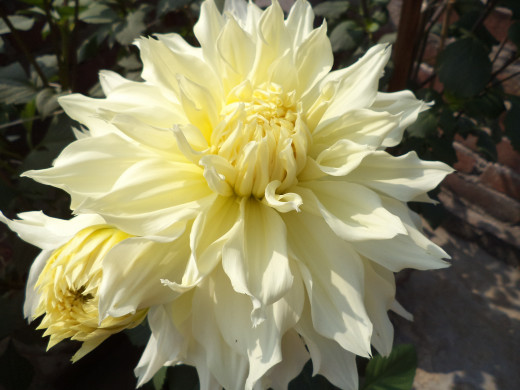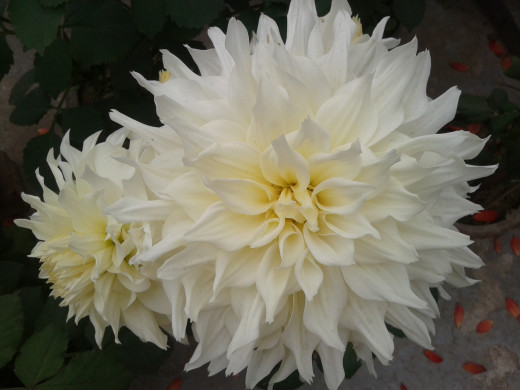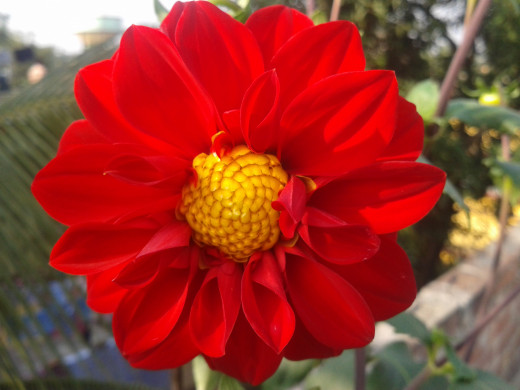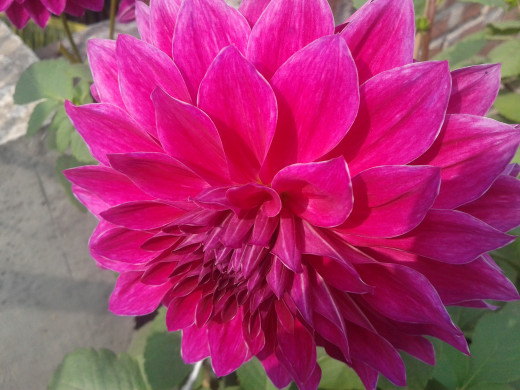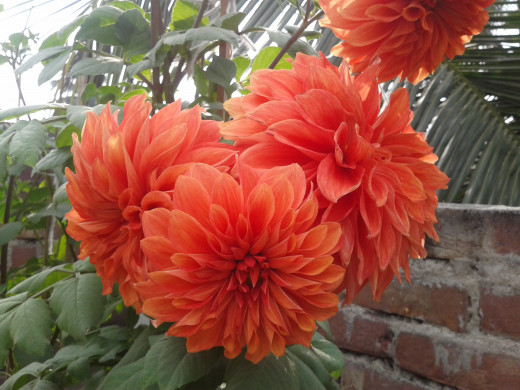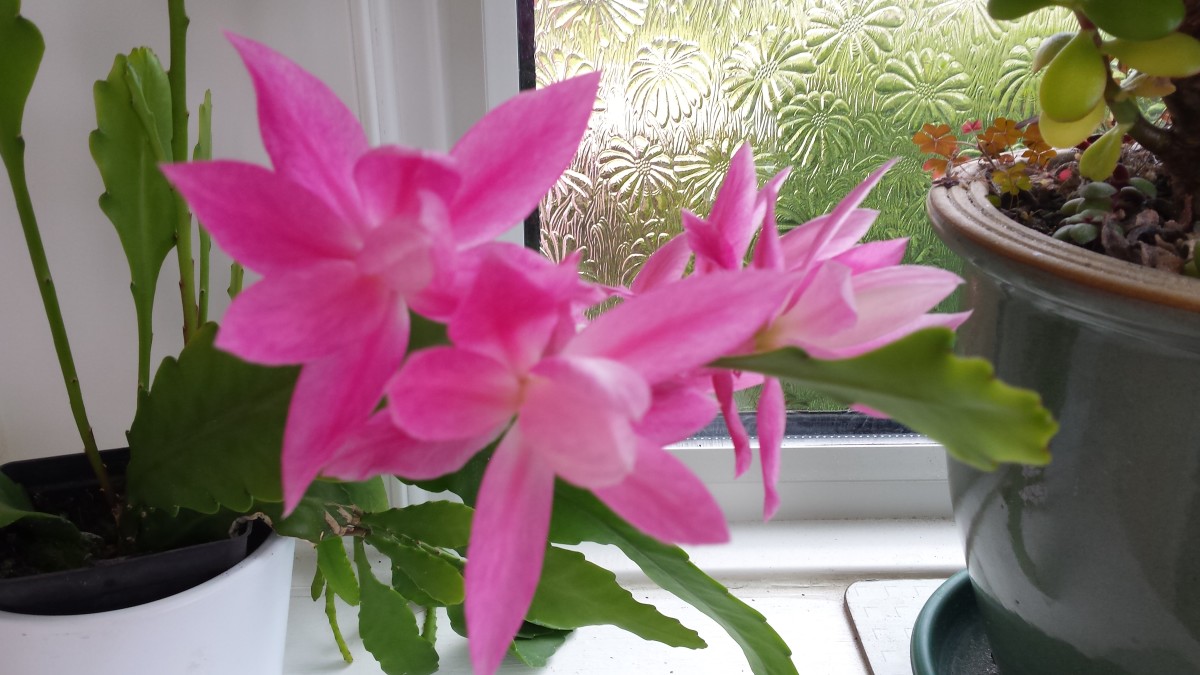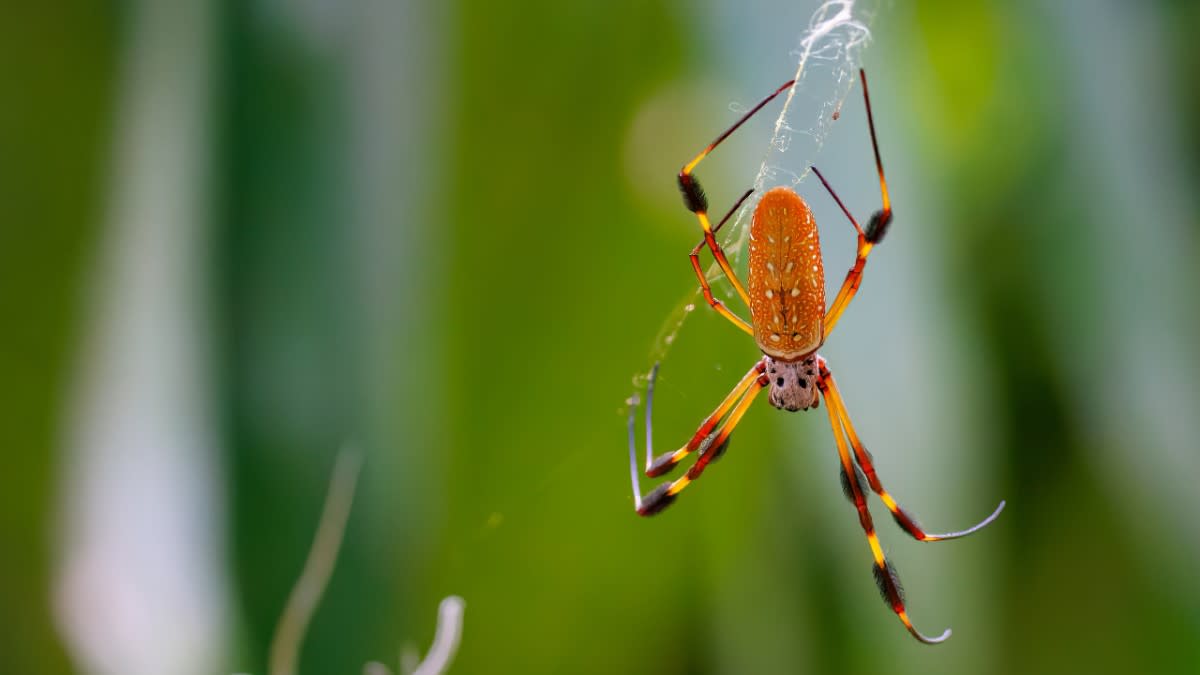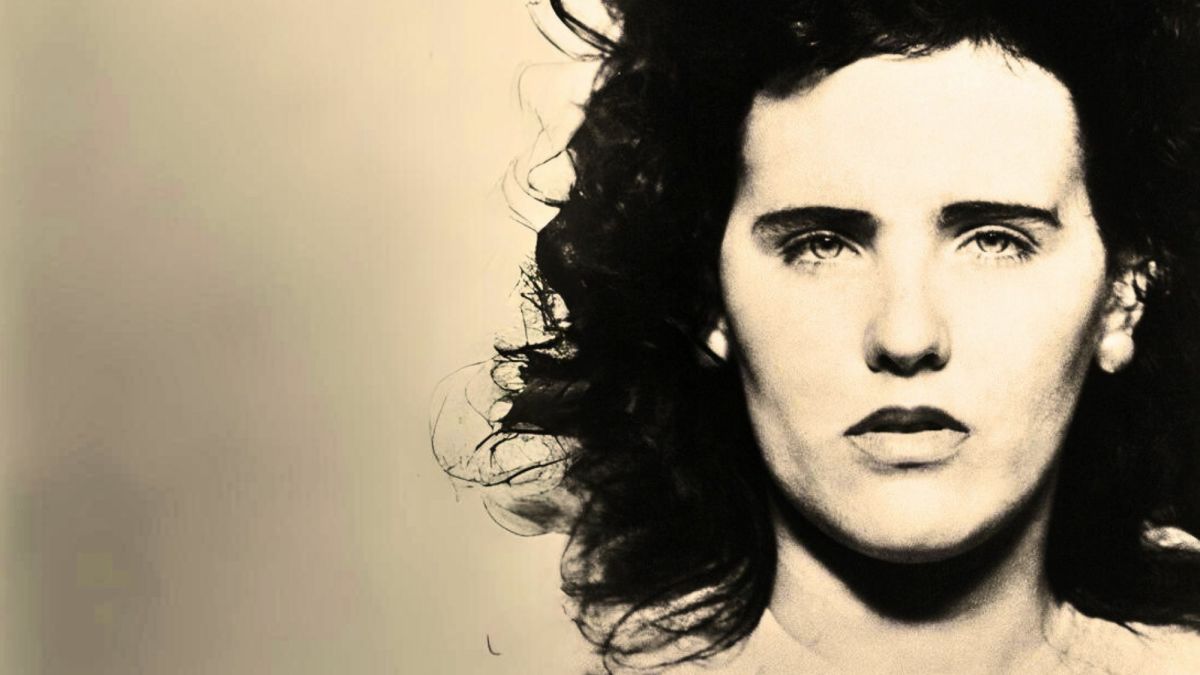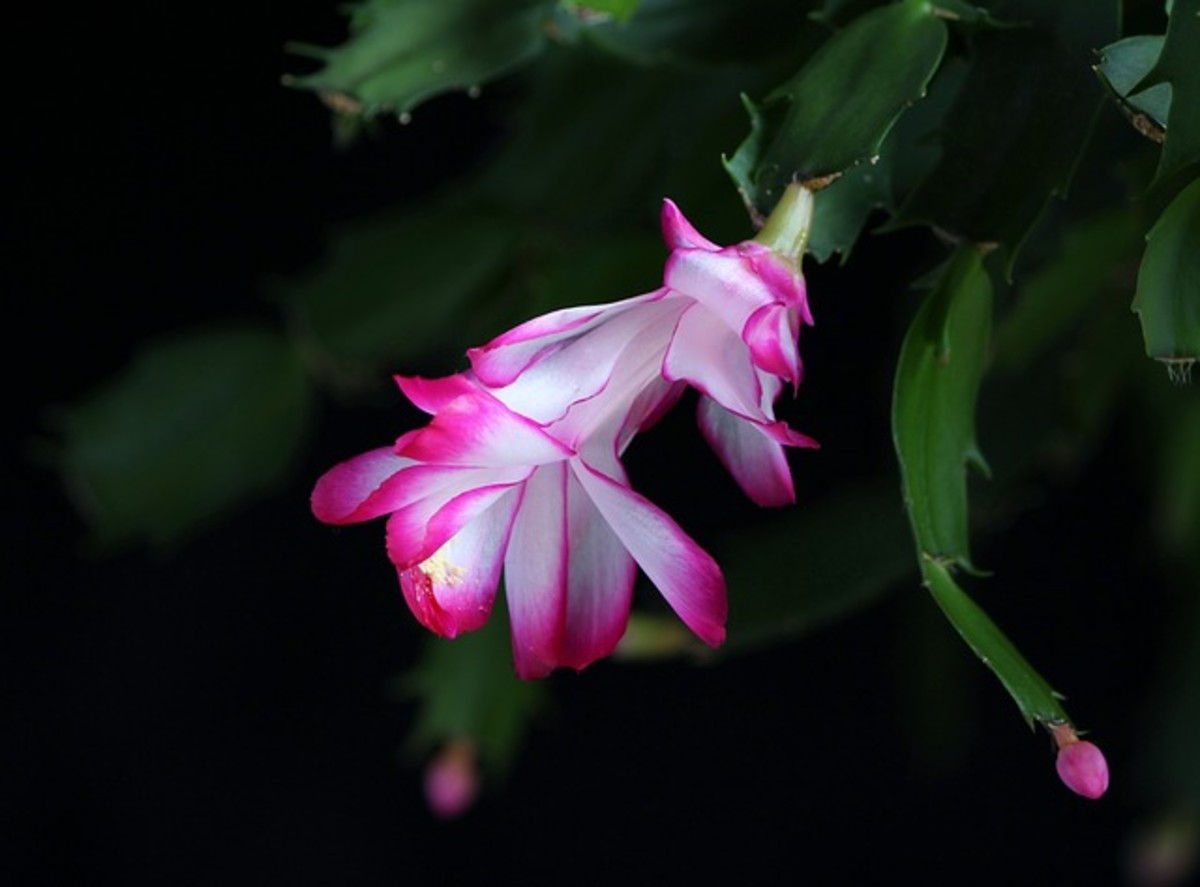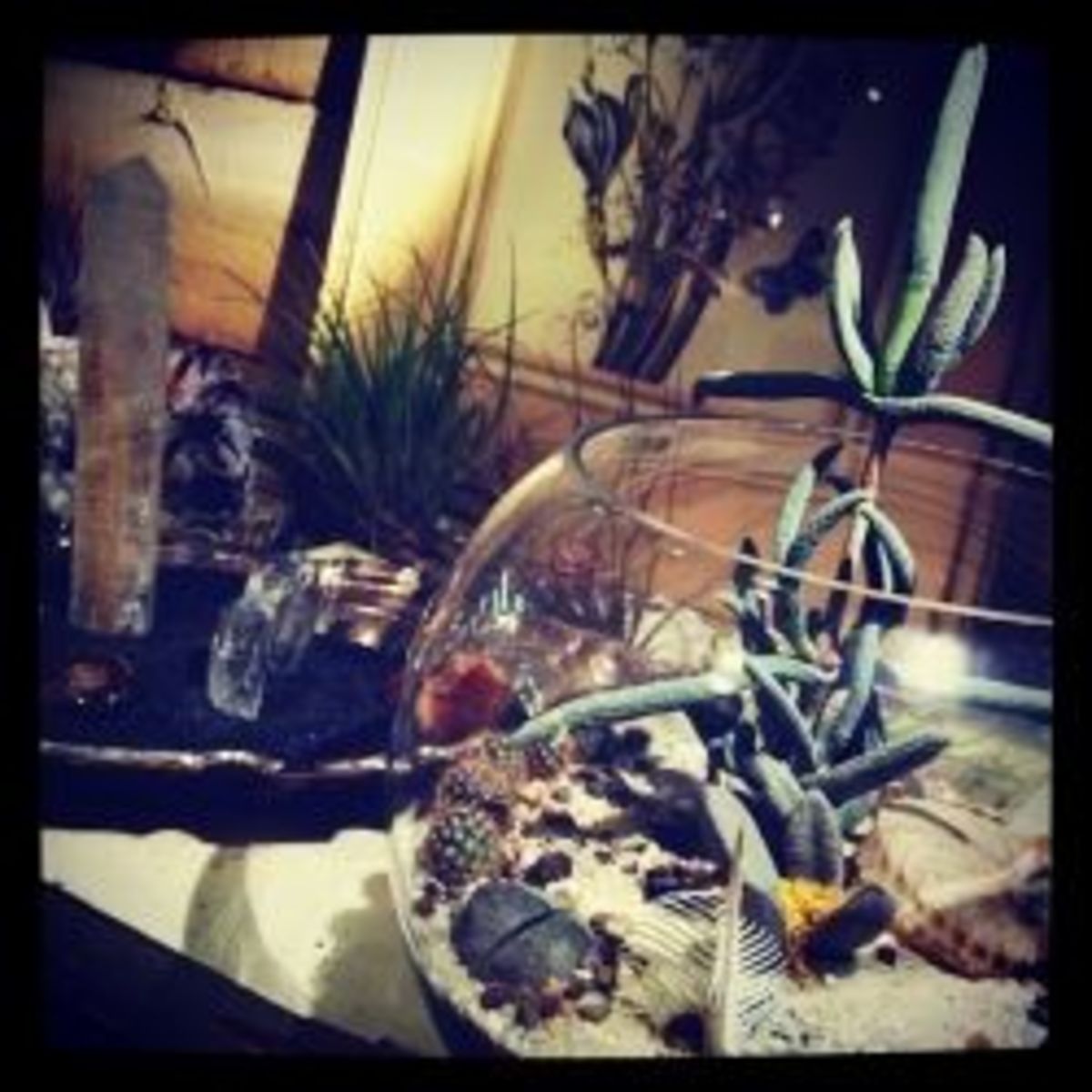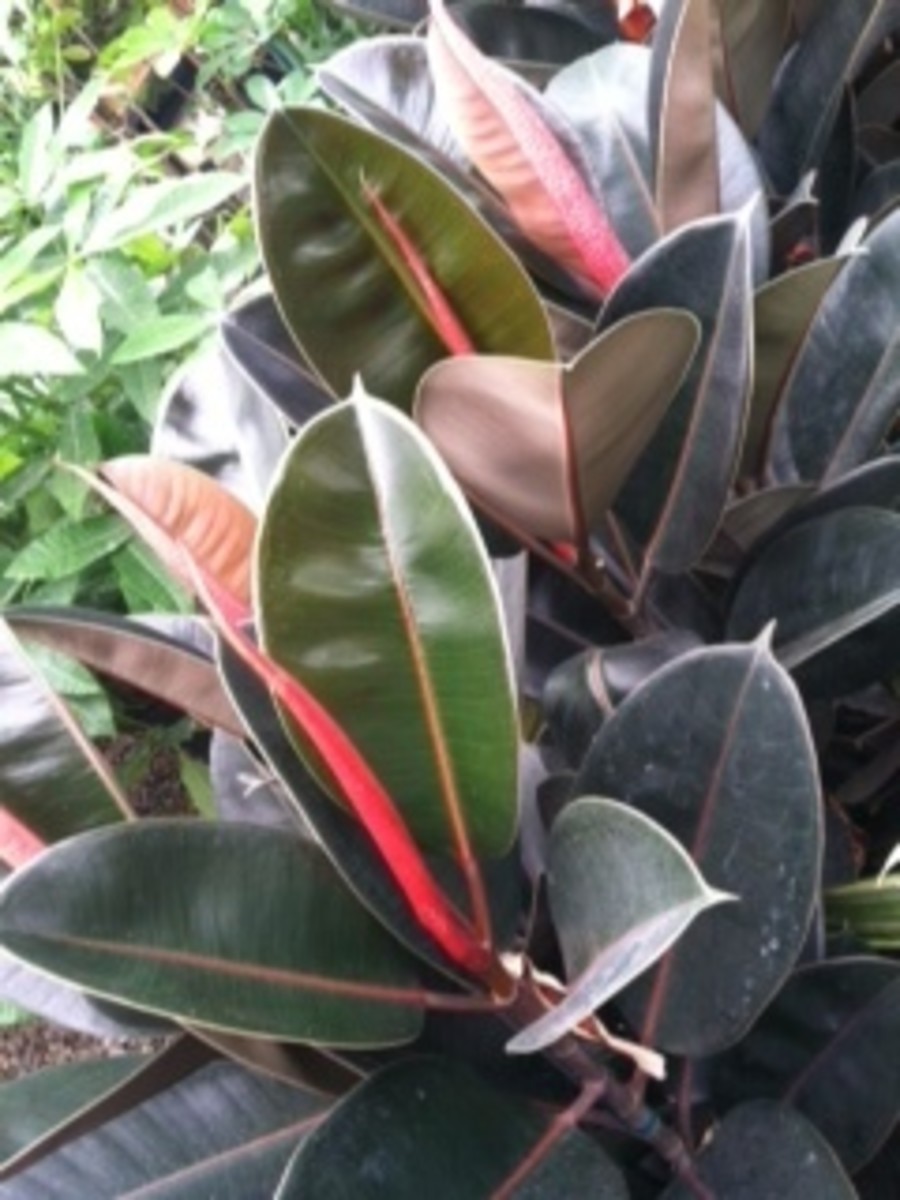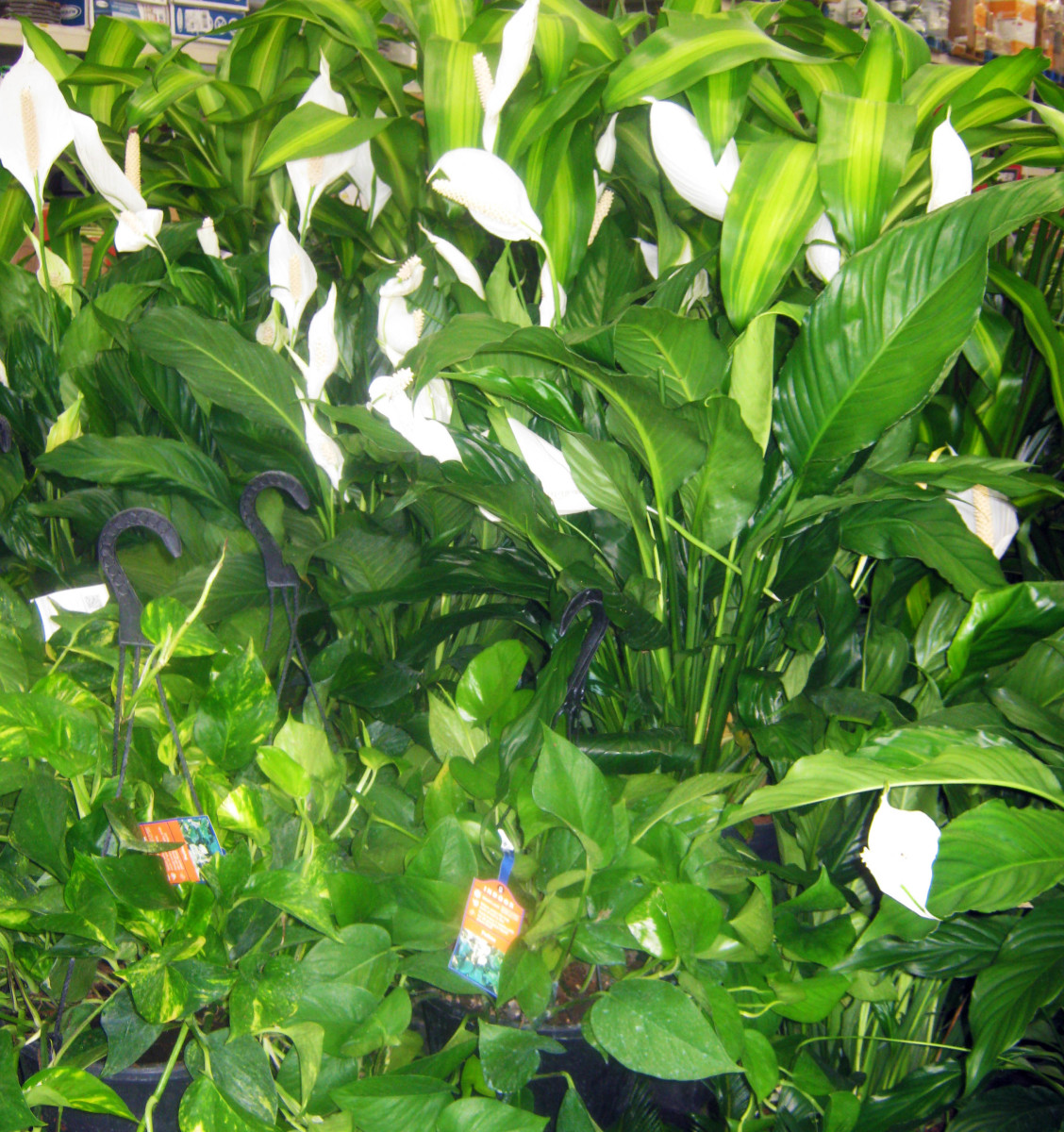About Dahlia
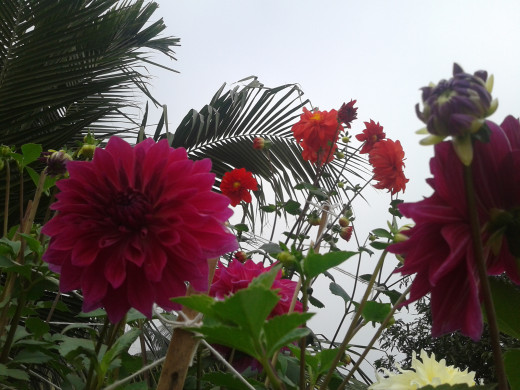
Dahlia is a tuberous, herbaceous perennial plant, it is native to Mexico, Central America and Colombia. It is a member of dicotyledonous generally related to sunflower, daisy etc. Flowers are generally very cute and create a very good show in every garden. These plants exists with a variety of a minimum of 36 species of dahlia and their hybrids will add up.
It’s Structure
Flowers: Big as said starting from 2 in and ending to a size of a plate (1 ft.). Brightly colored and color varieties are outnumbered, it’s usually hard to find the exceptions other than blue or black.
Flowers are not scented thus not attracting pollinating insects.
Bud: Size of it goes with the size of the flower.
Leaves: Leaves are moderate sized about 2-4 inches in diameter. Plants are fully covered with leaves and thus looking beautifully green.
Stem: Stems of dahlia are quite thick, hollow and generally ready to break by not being able to endure the load of its flower.
Some grows too many branches by the side of the main stem, and some needs to be induced by cutting the tip.
It grows up to a height of 1 foot to about 8 foot.
Roots: Roots are tuberous. Propagation is usually done from this part as it is a perennial plant it needs to be stored around half the year.
Size of each tuber is almost like a potato.
Types of Flower
There are 10 main groups of dahlia from which their large number of family and hybrids derives. These 10 groups are:
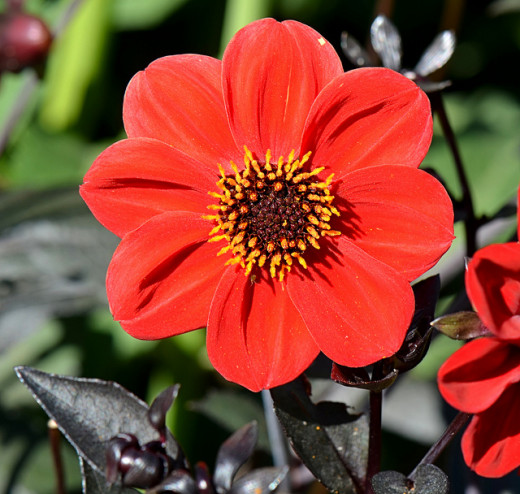
1. Single Dahlia
These are usually small in size about 4-10 cm in diameter, vibrant in color. It is the most pure form of dahlia.
Examples of single dahlia are:
- Dahlia Omo: White petals with central yellow disc.
- Dahlia Harvest Amanda: Orange petals.
- Preston Park: Almost red petals with purple center.
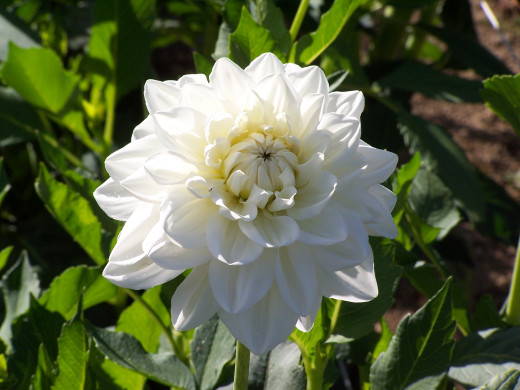
2. Waterlily Dahlia
It is the most common type of dahlia having a sweet and gorgeous appearance. Size ranges amongst the biggest dahlia, the depth is less than half the diameter of the bloom, thus giving it a look like a waterlily.
Examples of waterlily dahlia are:
- Carolina Moon: White petals with a purple gradient, gorgeous appearance.
- Anna Lindh: Complete white petals.
- Taratahi Ruby: Red petals.
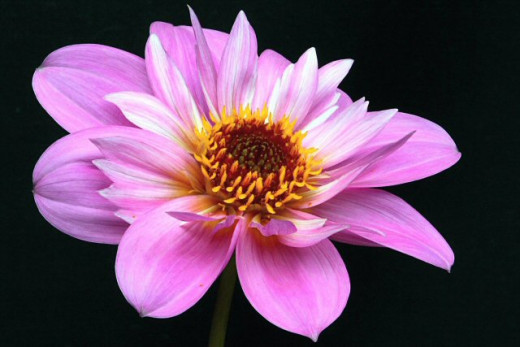
3. Collerette Dahlia
These comes from the single dahlia type having a different appearance with different colored florets, almost all species of these have two main color.
Examples of Collerette dahlia are:
- Christmas Carol: Red petals with yellow center and white collar florets.
- Lilian Alice: Purple petals, yellow center and white collar florets bigger than the former.
- Teesbrooke Red Eye: Light purple petals, almost same colored florets and brown center.
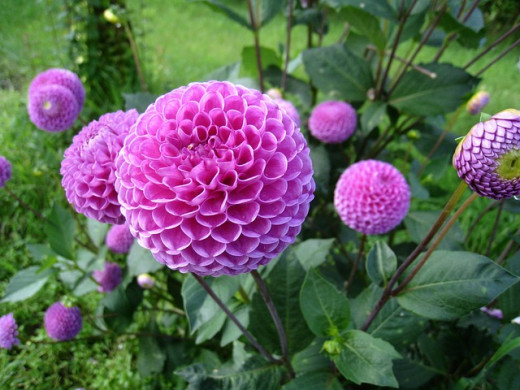
4. Pompom Dahlia
It is almost like ball dahlias but it is more rounded in shape and has a very gorgeous and fascinating form. Its size range from 5 cm to 2 inches not much large but will give a great look in your garden.
Examples of Pompom dahlia are:
- Gillwood Violet: Light purple petals, petals are curled inwards.
- Martin’s Yellow: Goes with the name, Yellow petals.
- Noreen: Its color is darker than Gillwood Violet, giving it a decorative look.
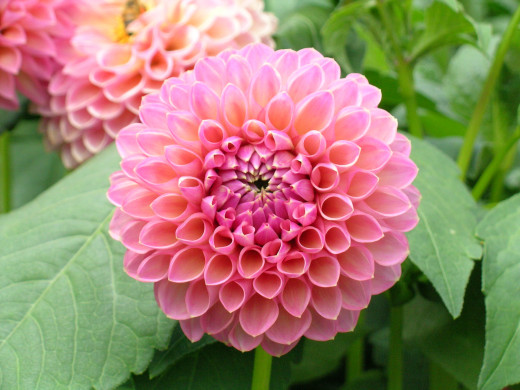
5. Ball Dahlia
It’s a tribute to nature that this type of flowers exists and grows in almost every part of the world. Its size is bigger than pompom dahlia ranging from 10 cm to 6 inches giving it a really gorgeous look.
Examples of Ball dahlia are:
- Barberry Carousel: Almost purple colored petals, with a gorgeous look.
- Wootton Cupid: Pink colored petals.
- Rothesay Superb: Red colored petals, with plenty of blooms.
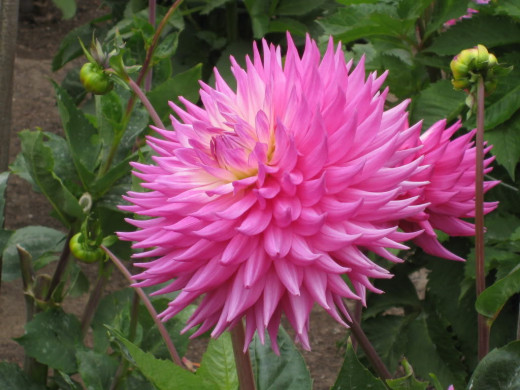
6. Semi-cactus Dahlia
These are called semi-cactus because the petals are pointed almost giving a look like thrones. Although semi-cactus got the base petals broader than the back ones. Its size ranges from 4-10 inches.
Examples of Semi-cactus are:
- Altami Corsair: Crimson colored petals.
- Pink Jupiter: Goes with the name, pink colored petals with slight yellow colored base.
- Yellow Spiky: Yellow colored petals, sunflower look.
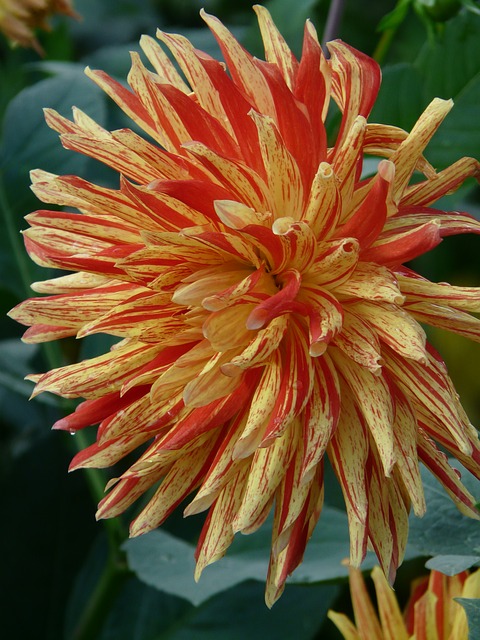
7. Cactus Dahlia
It is almost like semi-cactus, but base petals straight or curved unlike semi-cactus. Floral size ranges same as the semi-cactus dahlia.
Examples of Cactus Dahlia are:
- Dana Iris: Strong red colored petals.
- Rokesley Mini: Pure white petals.
- Shirley Alliance: Orange colored petals.
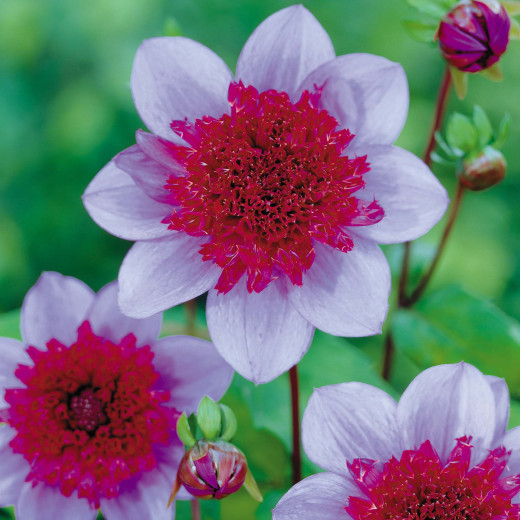
8. Anemone Dahlia
This is a very strange and uncommon flower, unique from the other dahlia, with longer tubular florets, which contributes to their gorgeous effect. Their size ranges from 4-6 inches. All the flowers are really gorgeous.
Examples of Anemone Dahlia are:
- Purple Puff: Purple colored petals with a deeper colored base.
- Slow fox: Light pink colored petals with yellow florets.
- Blue Bayou: Light blue colored petals with red florets.
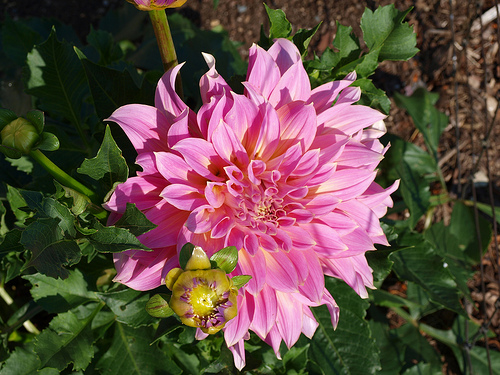
9. Decorative Dahlia
It is a gorgeous looking flower, having two or more colors on their petals. Usually the center is hidden, petals are blunt at the tip and usually twisted. They are perfect for a show.
Examples of Decorative Dahlia are:
- Corton Olympic: Orange petals with a size of 25 cm to 10 inches.
- Davenport Honey: Amber colored petals, petals are blunt at the top.
- Kidd’s Climax: Pink and orange gradient, giving a gorgeous look, perfect for an exhibition.
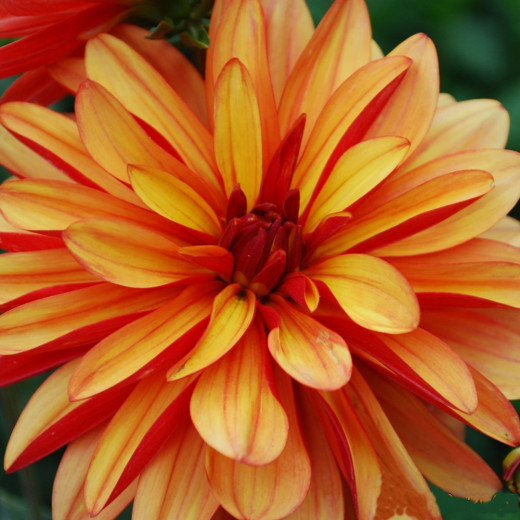
10. Miscellaneous Dahlia
Flowers that do not fall on the above category will onto this category. Orchid dahlia, peony, chrysanthemum-flowered dahlias are usually a part of this.
Examples of Miscellaneous Dahlia are:
- Bishop of Llandaff (Semi-double): Red petals, darker at the bottom.
- Jescot Julie (Orchid): Orange narrow petals.
- Freya’s Thalia (Lilliput): Deep red colored flowers with orange center.
So, which one is the best to you?
Anatomy
The Asteraceae is the second largest family in the Division Magnoliophyta (flowering plants), with over 20,000 recognized species. Only the orchid family (Orchidaceae) can compete it with 25,000 species.
The most significant characteristics of these plants is the presence of capitulum, or floral head, which contains a number of small individual flower, termed florets.
There are two types of florets:
- Disc florets represent the center of a dahlia flower, the inner portion of captilum.
- Ray florets represents the petals of the flowers, the outer portion of the capitulum. It consists of single liguate, or strap like petals.
Do you know?
They have eight sets of homologous chromosomes, whereas most plants have only two.
Scientific Classification
Kingdom: Plantae
Group: Angiosperms
Group: Eudicots
Group: Asterids
Order: Asterales
Family: Asteraceae
Subfamily: Asteroideae
Tribe: Coreopsideae
Genus: Dahlia Cav.
Photos
Click thumbnail to view full-size




My Story
I grew some dahlia last year on my roof, 2 months of patience and it was turned into a fabulous flower garden. I have grown 4 types of them one was purple color normal sized the other one orange bigger than the first one, another one the cutest among all, the small red one, and the other the huge, 8 inches diameter white one.
The trees were also very green, good looking, as I really like vegetative green plant filled with huge leaves, it also make the flower look more beautiful.
Taking care of it, making it a fully formed plant from a spout, was a very interesting job (and a hobby too for me). Making the right mixture of potting soil, fertilizing it periodically, pruning, stalking etc. all these with a little bit of patience made my plant perfect.
Although this was my first successful garden, I was very happy having these much of it, next year hopping for more better garden. I also planted other flowering plants but they were not as much impressive as my dahlias.

